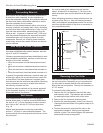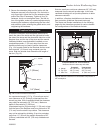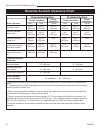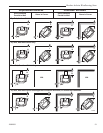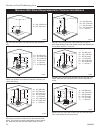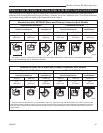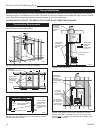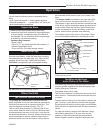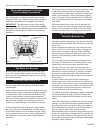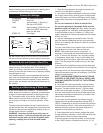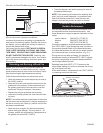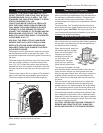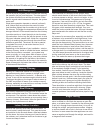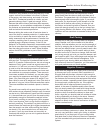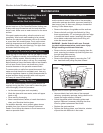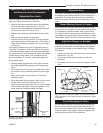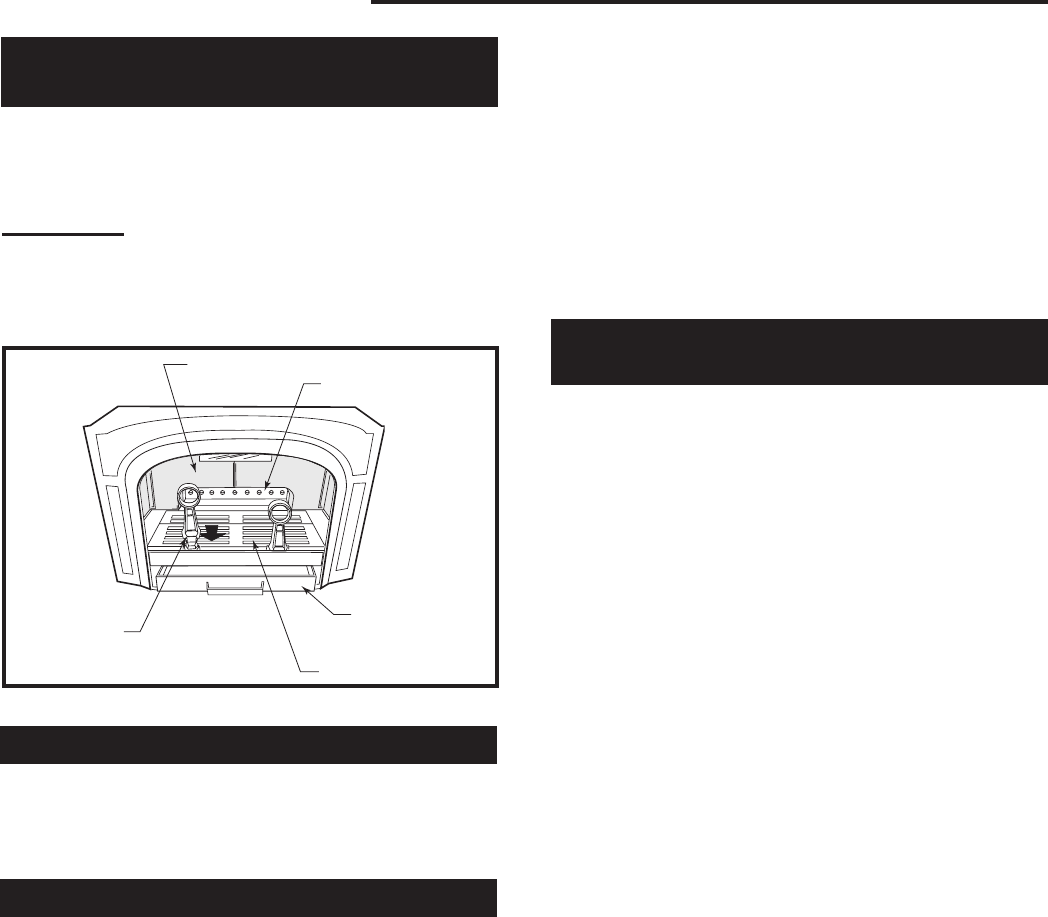
18
Resolute Acclaim Woodburning Stove
2000893
Removable Andirons For Greater
Front-Loading Convenience
The andirons slip into pockets cast into the front of
the bottom grate and can be removed when loading
through the front door. (Most Acclaim owners, however,
prefer the convenience of “smokeless” top loading.)
IMPORTANT:
The andirons must be in place during
operation. (Fig. 28) They not only help keep the glass
door panel clear for fireviewing, but they assure proper
placement of the fuel load for efficient clean-burning
operation.
ST612
Resolute Acclaim
firebox
1/01
Firebricks
Secondary Air
Ports
Ash Pan
Bottom Crates
Removable
Andirons
ST612
Fig. 28 A look inside the firebox of the Resolute Acclaim.
Two Rules For Success
Burning wood is said to be more of an art than a sci-
ence. You’ll easily master the art if you start by using
good, dry fuel, and understand how the stove’s air sup-
ply system operates.
Burn Only High-Quality Fuel
This heater is designed to burn natural wood only; do
not burn fuels other than those for which this heater
was designed.
Higher efficiencies and lower emissions generally result
when burning air-dried, seasoned woods as compared
to softwoods or freshly cut hardwoods. Avoid burning
“green” wood that has not been properly seasoned.
Also, do not use construction materials or trash as fuel;
the chemicals, coatings and hardware that may be
present can cause damage to the refractory material.
•
The best hardwood fuels include oak, maple, beech,
ash, and hickory that has been split, stacked, and air-
dried outside under cover for at least one year. Avoid
burning cordwood that is over 2 years old as such fuel
can contribute to short burn times, backpuffing and
over-firing.
•
For areas that do not have a supply of hardwood, some
of the better softwoods that are commonly burned
include tamarack, yellow pine, white pine, Eastern red
cedar, fir, and redwood. They too should be properly
dried. The length of the wood should be 16” (406 mm).
Use of wood shorter than 16” may result in decreased
burn times.
Wood should be stored under cover to maintain dry
-
ness. Even for short-term storage, keep wood a safe
distance from the heater and keep it out of the areas
around the heater used for refueling and ash removal.
Use the Air Control Settings
That Work Best for You
No single control setting will fit every situation. Each
operation will differ depending on the quality of the fuel,
the amount of heat desired, and how long you wish the
fire to burn.
Control settings also depend on your particular instal-
lation’s “draft,” or the force that moves air through the
stove and up through the chimney. Draft is affected
by such things as the length, type, and location of the
chimney, local geography, nearby obstructions, and
other factors.
Too much draft may cause excessive temperatures in
the stove. On the other hand, too little draft can cause
backpuffing into the room and/or insufficient heat.
How do you know if your draft is excessively high or
low? Symptoms of too much draft include an uncontrol-
lable burn or a part of the stove or chimney connector
glowing red. Inadequate draft is indicated by smoke
leaking into the room through the stove or chimney con-
nector joints.
In some newer homes that are well-insulated and
weather-tight, poor draft may result from insufficient air
in the house. In such cases it may be necessary to duct
combustion air to the stove directly from outside. In fact,
in some areas, outside combustion air is required for
stove installations in all new construction.
Your Resolute Acclaim is designed to easily incorporate
outside combustion air with a Vermont Castings Out
-
side Air Duct Adapter #3255 available from your local
dealer.
When first using the stove, keep track of the air control
settings. You will quickly find that a specific setting will
give you a fixed amount of heat. It may take a week or
two to determine the amount of heat and the length of
burn you should expect from various settings.
Most installations do not require a large amount of com-
bustion air, especisally if adequate draft is available. Do
not for any reason attempt to increase the firing rate of
your heater by altering the air control adjustment range
outlined in these directions.



